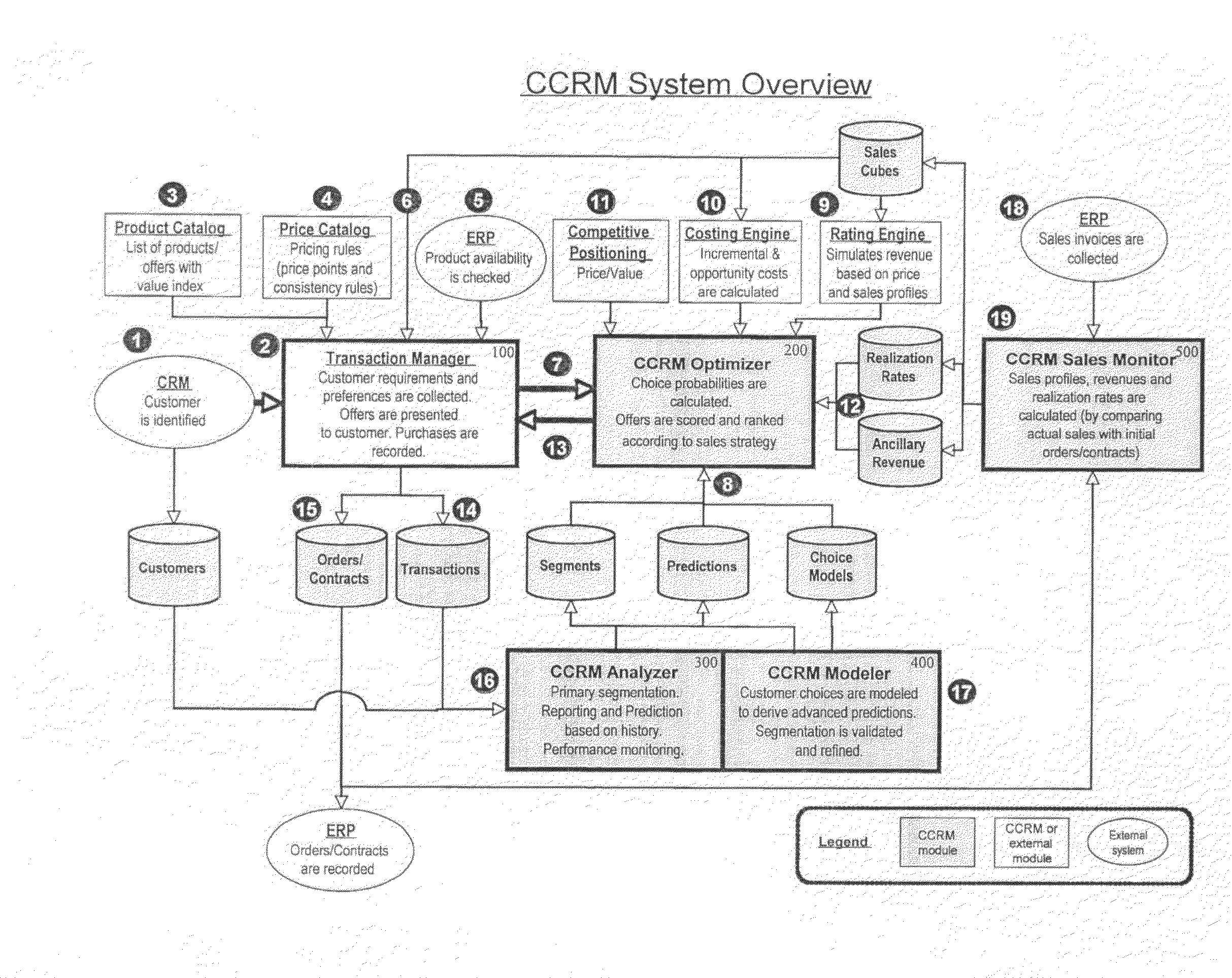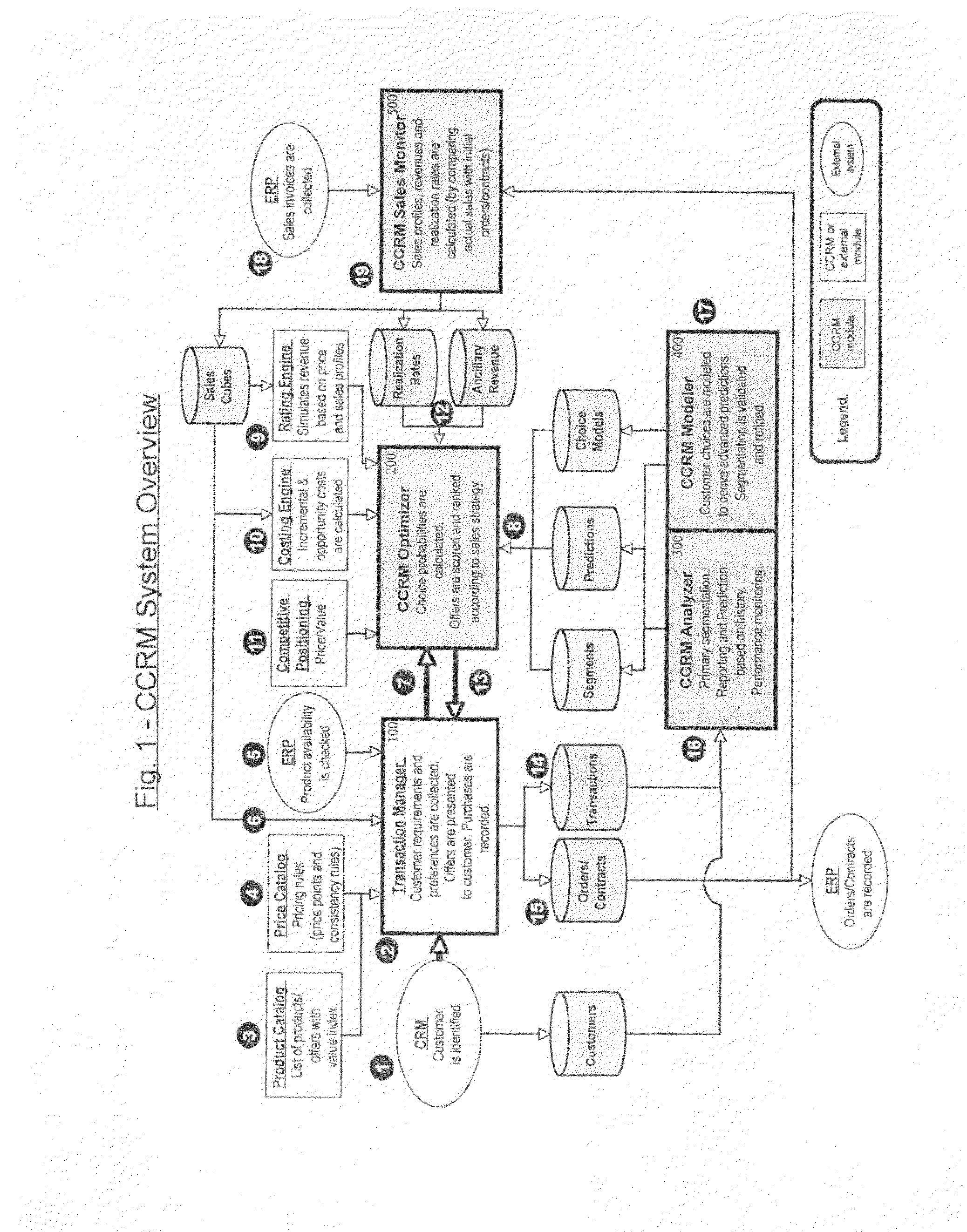Customer centric revenue management
- Summary
- Abstract
- Description
- Claims
- Application Information
AI Technical Summary
Benefits of technology
Problems solved by technology
Method used
Image
Examples
first case
[1281]In this case, the analyst chooses only the best ranked characteristic. The next step is to create the categories. If the variable is continuous, the analyst can choose via the interface the number of categories to create. The categories are then created so that the number of customers in each category is equivalent.
[1282]If the variable is discrete, CCRM has already the list of significant dummy variables, so it can retrieve the related categories and use only these categories in the sub-segmentation.
second case
[1283]The sub-segmentation of each segment Sm is made recursively in a top down manner beginning by the first characteristic that influences the most the choice and finishing by the one influencing the least the choice. The split made at each node is based on a single variable, but can result in multiple branches. The different steps are:[1284]Begin by segment Sm;[1285]Consider the first predictive characteristic;[1286]Prepare categories: if the predictive characteristic is already categorical, then categories are the ones relative to significant dummy variables, else, categories can be created by dividing the respective continuous distribution of the predictor into a number of categories with an approximately equal number of customers. This number is fixed by the analyst and is the same for all the tree structure;[1287]Split the segment using these categories;[1288]Choose the next predictive characteristic with maximal influence on the choice behavior;[1289]Continue this process un...
PUM
 Login to View More
Login to View More Abstract
Description
Claims
Application Information
 Login to View More
Login to View More - R&D
- Intellectual Property
- Life Sciences
- Materials
- Tech Scout
- Unparalleled Data Quality
- Higher Quality Content
- 60% Fewer Hallucinations
Browse by: Latest US Patents, China's latest patents, Technical Efficacy Thesaurus, Application Domain, Technology Topic, Popular Technical Reports.
© 2025 PatSnap. All rights reserved.Legal|Privacy policy|Modern Slavery Act Transparency Statement|Sitemap|About US| Contact US: help@patsnap.com



